Land of Extinct Volcanoes part 9/16 - Agates of Nowy Kościół
Finally! This is what I came for! But first:
Minerals are called differently depending on their color or form, even if they are the same stuff at the base. Same in case of agates. The base is silica. When in noncrystalline form, it is a glass or obsidian (although both terms are used more widely, not just to silica). The cryptocrystalline form is called chalcedony. When chalcedony with different additives (having different colors) is layered, then we get an agate. Agate geodes often contain small crystalline forms of silica called quartz (or any of its differently named colorful forms).
It would be nearly impossible for me to find anything on my own without prior directions from a professional. Therefore I took the opportunity and made an appointment with Mr. Piotr Sarul. He organizes mineral hunting trips / stone working lessons during season. On my trip, aside from the very knowledgable guide, I was accompanied by 9yo mineral fan, her mother and their dog :o)
At first we reached Wąwóz Piekiełko (Inferno Ravine?).
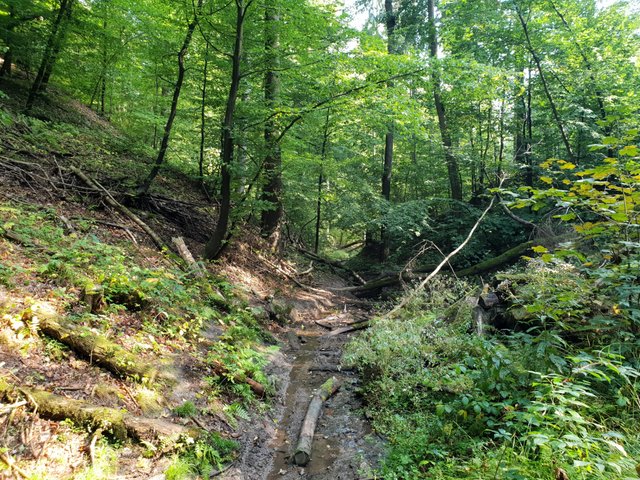
The place is damp, green and filled with life. Fire salamander:
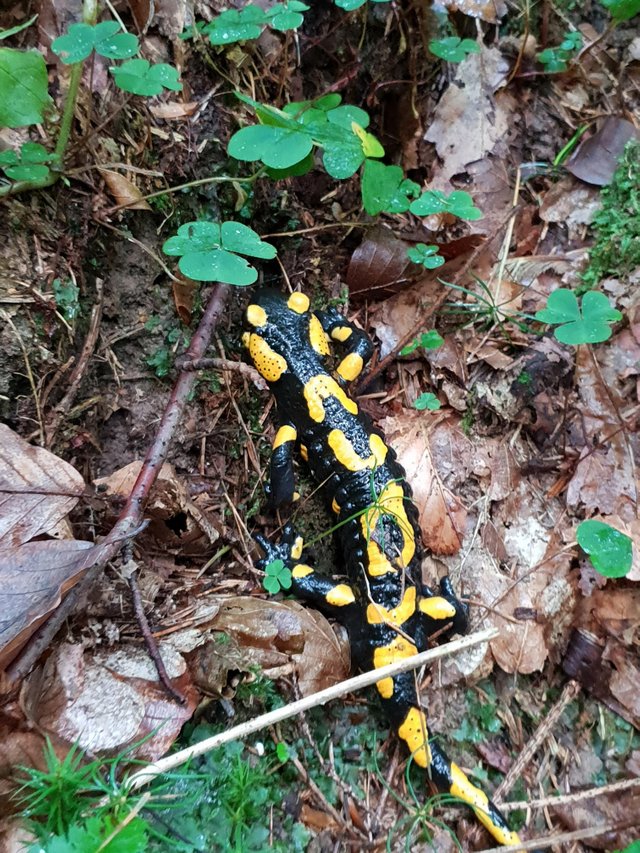
A choice of mushrooms:
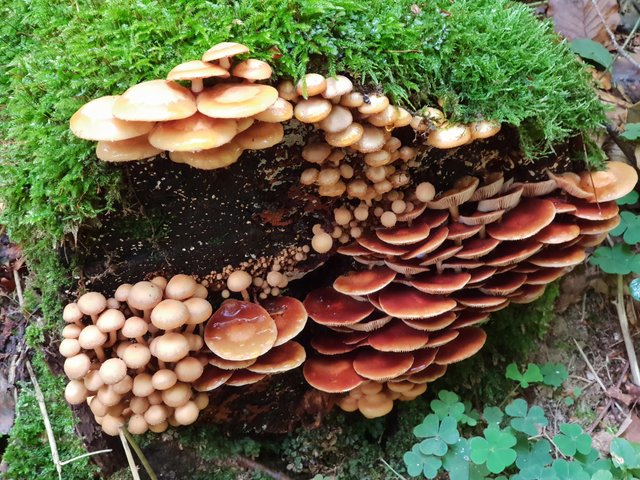
These are actually all the same species, just different stages of growth.
Common puffball
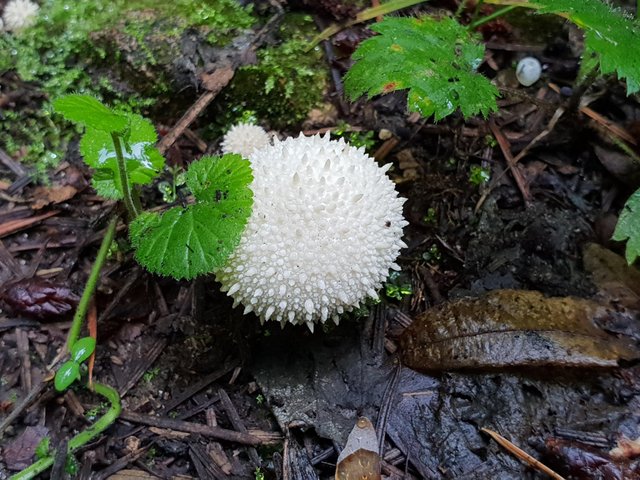
and snail-eaten giant puffball (small for its kind - just 16cm in diameter)
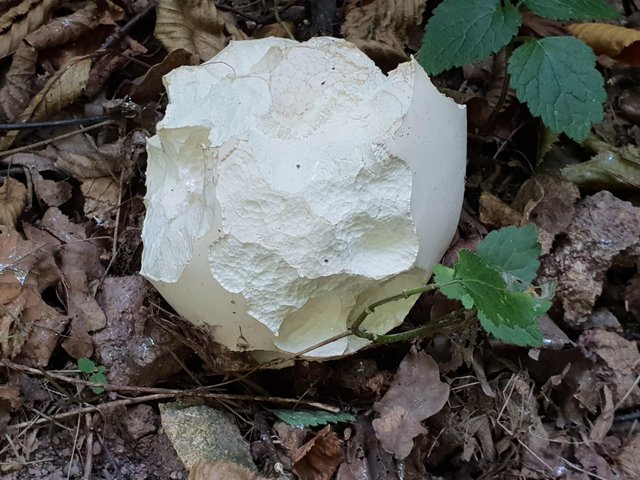
Both edible when young, like the ones in above pictures, however giant puffball is protected species in Poland.
Out of edible mushrooms I also found oyster mushrooms, bovine boletes (again) and a single porcini. There were really nice looking fly agarics and countless species of polypores. All that in a forest filled with overgrown beech trees, pines and douglas firs (not native to the region but pretty well acclimatized).
"Where are the minerals", you ask. Well, they are everywhere there, in the stream, in the holes dug in the ground and just lying there. The problem is not where to find them, but how to spot them. Agates in this area formed in rhyolite. When rhyolite cracks filled with silica solution, the porous rock absorbed some of it as well, making itself harder. Then the erosion crushed soft parts, but the ones that were glued remained solid. Hence the agates now have the form of nodules, generally roundish, but in a deformed, spiky way, not like the cobblestones.
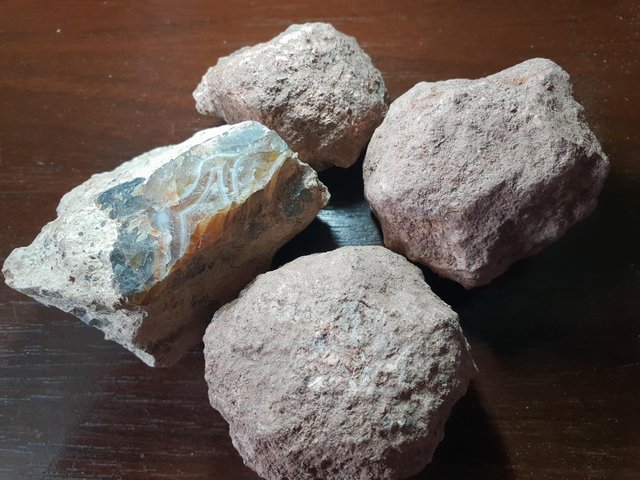
There are many holes in the forest floor, dug by other mineral hunters, but also by forestry units (f.e. when removing roots of infected trees). Some of these holes are over century old. We skimmed through one of such holes to learn what to look for. After couple of minutes we moved further up. The top of the hill is used for farming. There are several large fields, but our guide told us that only specific area on one of them contains agates. Unlike the hole where we were looking for nodules, on the field it was better to look for stones that already had some parts of agate exposed. The main problem of searching at the field was omnipresent dust. All stones looked the same, while if they were wet, the ones we wanted would be easily distinguishable (on the other hand the field would probably turn into sticky clay).
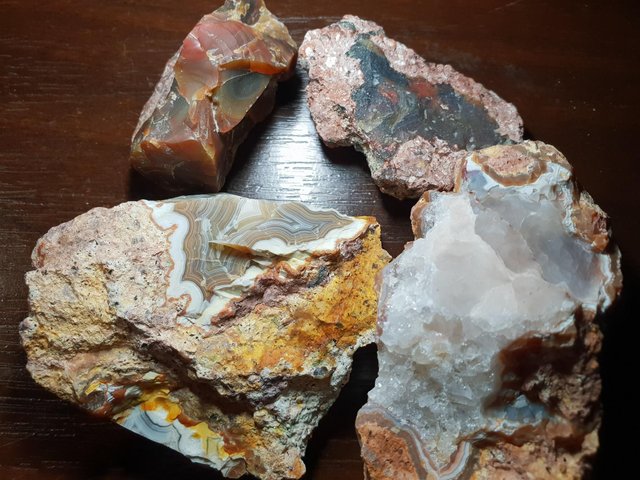
In the end, even if a stone looks like it might contain an agate, you never know for sure until it is cut. It can still end up containing almost nothing (because you picked up pure rhyolite that just didn't turn into dust yet, or the void in the cracked stone was never filled with silica)...
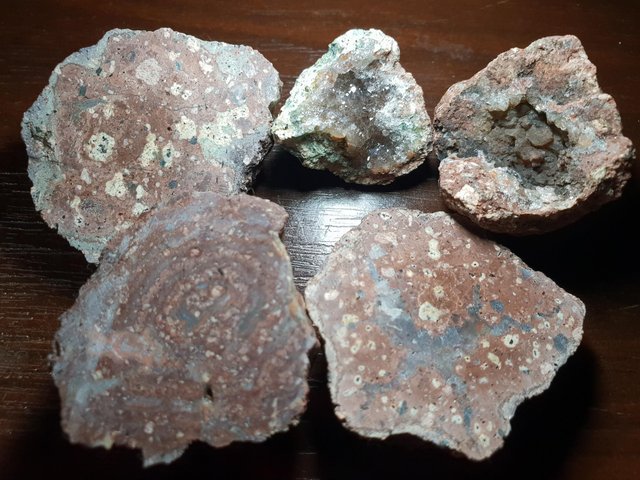
...but it can just as well turn out to be a hit.
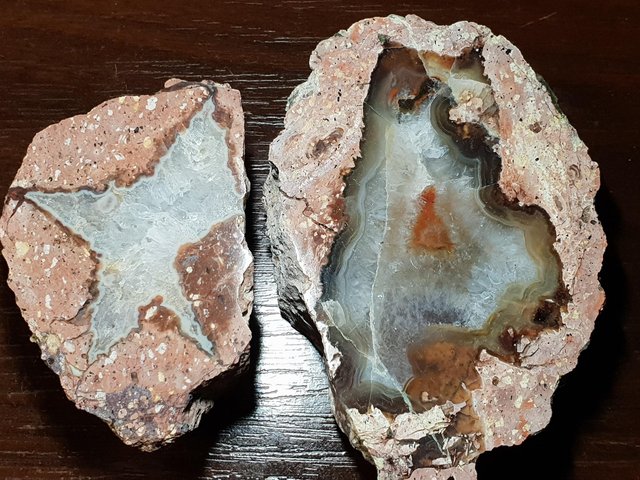
Some samples are translucent (at least after proper cutting).
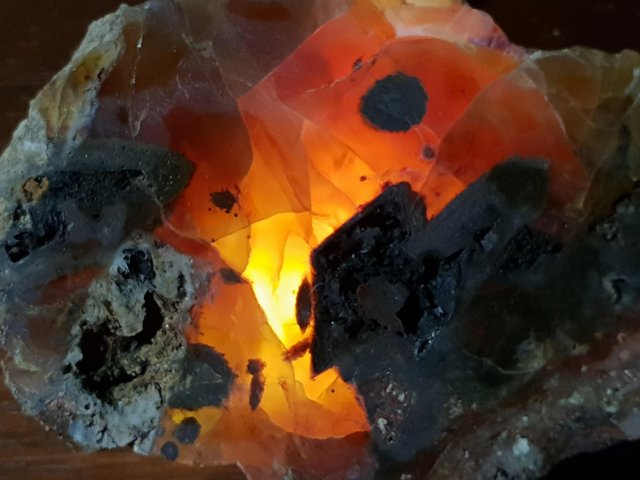
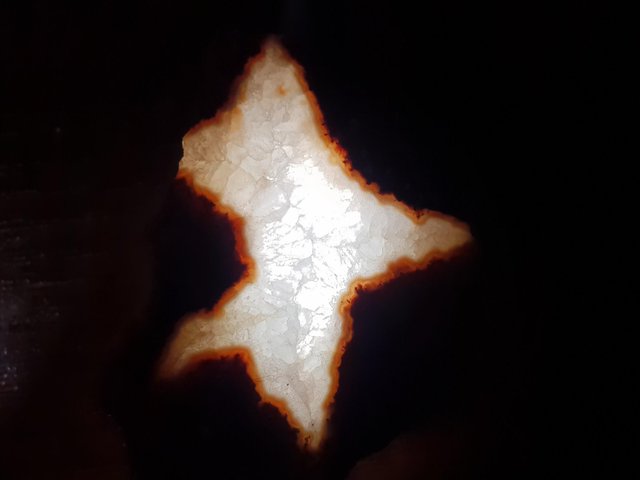
Since cutting, grinding and polishing exert significant forces, the specimens can crack...
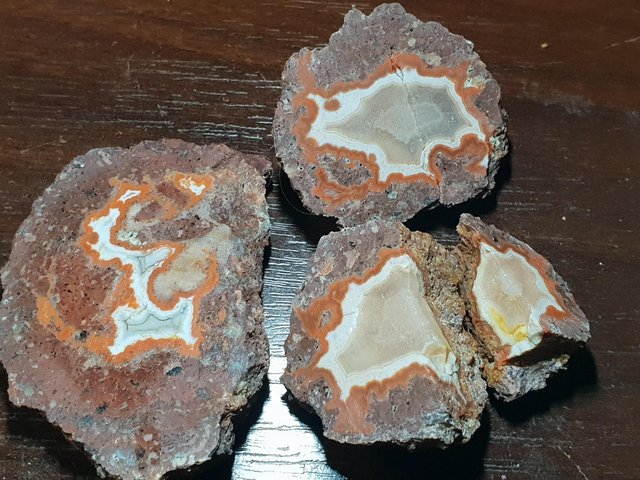
...that is, unless it is lydite - a fine grained, dark-gray to vivid black (carbon rich) sedimentary rock (yet still silica) with white vains of quartz. It is pretty common in the region, I picked up one in pretty much every location I visited. Here is one cut, but in order to properly show its contrasting colors it still needs to be polished (just like most of my specimens; I only polished couple while learning how to do it properly).
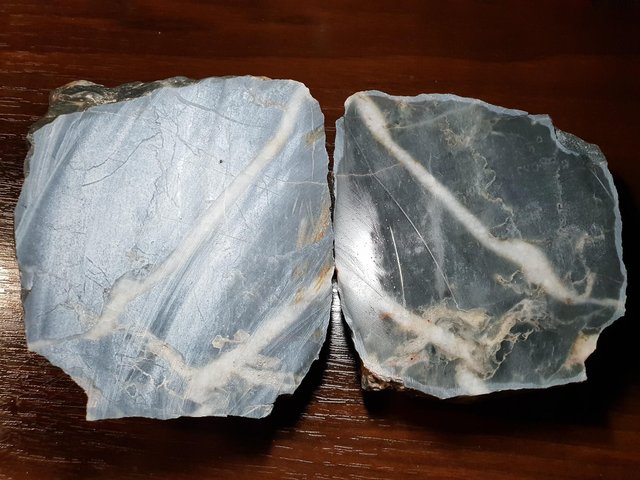
Some stones look extra interesting, f.e. this formation of chalcedony:
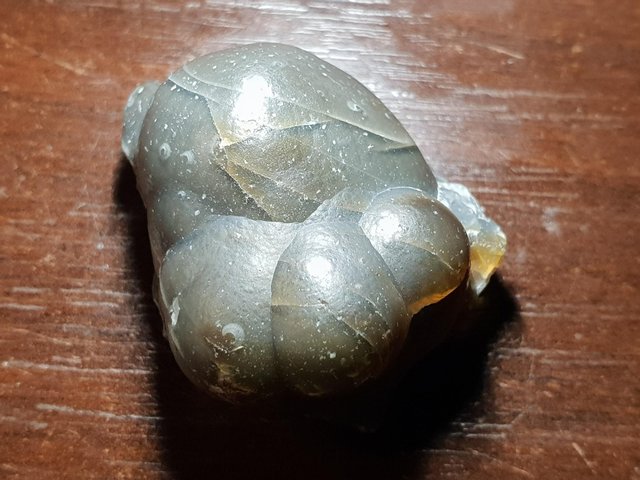
or this one with post-calcite pseudomorphs:
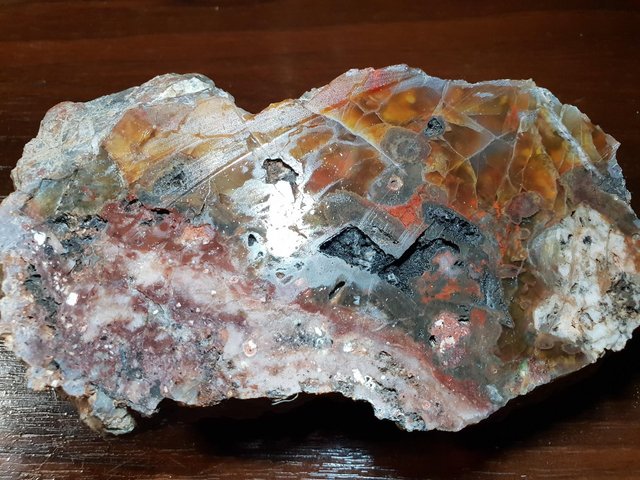
A pseudomorph is when one mineral replaced the other while keeping its (now atypical) shape. In this case dark chalcedony replaced calcite dripstone and small "dog teeth" crystals that are typical form for a calcite but not for chalcedony.
I returned to the field couple days later, but I was unlucky - there were couple of tractors plowing and whatever they do afterwards. While I could easily step out of their way I couldn't do the same for dust screen they were rising; sadly I had to evacuate without any trove.
These are some beautiful specimens!
Thank you :o)
Congratulations, Your Post Has Been Added To The Steemit Worldmap!
Author link: http://steemitworldmap.com?author=miosha
Post link: http://steemitworldmap.com?post=land-of-extinct-volcanoes-part-9-16-agates-of-nowy-kosciol-928203084b7a7est
Want to have your post on the map too?
Thanks for using eSteem!
Your post has been voted as a part of eSteem encouragement program. Keep up the good work! Install Android, iOS Mobile app or Windows, Mac, Linux Surfer app, if you haven't already!
Learn more: https://esteem.app
Join our discord: https://discord.gg/8eHupPq